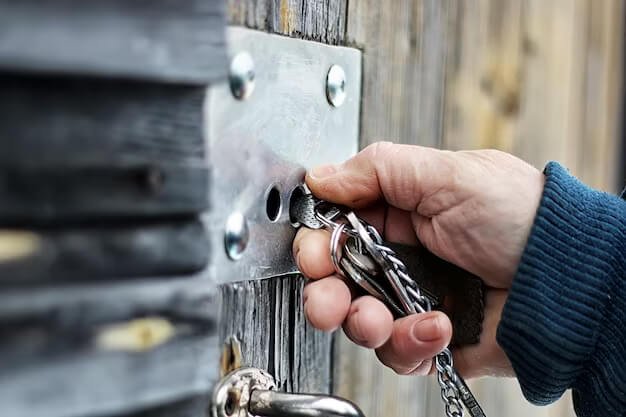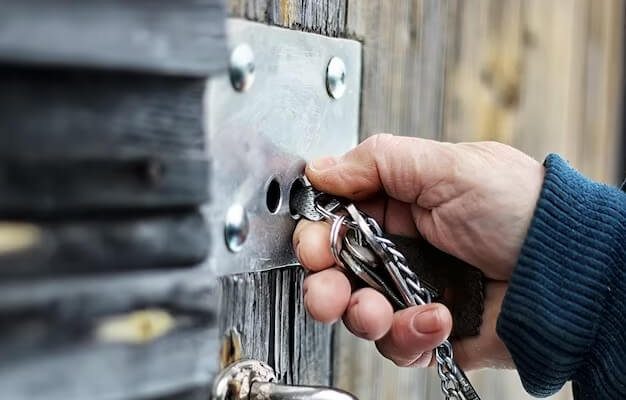
Maintaining your privacy locks is not just about keeping the mechanism clean. It’s about ensuring that every time you press that button, the lock engages without a hitch. Let’s dive into the steps you can take to keep your locks in top shape. Think of it like tuning up a car; regular check-ups can prevent a breakdown when you’re least expecting it.
Understanding Your Privacy Lock
Before we get into maintenance tips, it’s essential to understand how your privacy lock works. Most modern privacy locks, especially those connected to smart home systems, rely on electronic signals and batteries rather than traditional mechanical keys. For example, a keyless entry system not only locks and unlocks your door but also syncs with your smartphone, allowing you to control your home’s security from anywhere.
When you press a button on your remote, an electronic code is sent to the lock. If the code matches, the lock engages. This process sounds simple, but it involves various components that need to work harmoniously. Understanding this can help you troubleshoot when things go wrong—like if your lock refuses to unlock when you get home.
Regularly Check the Batteries
Think of the batteries in your privacy lock as the lifeblood of your system. Just like you wouldn’t ignore a gas gauge that’s on empty, keeping an eye on your battery levels is crucial. Most smart locks will alert you when battery levels are low, but don’t rely solely on that notification.
Here’s how to keep your batteries in check:
- Check battery levels every month, especially if your lock isn’t used frequently.
- Keep spare batteries in an easy-to-reach place so you can replace them when needed.
- Consider upgrading to rechargeable batteries to save some cash in the long run.
Be proactive. If your lock starts acting up, the first thing to check should always be the batteries. A low battery can lead to performance issues and might lock you out when you least expect it.
Cleaning Your Lock Mechanism
Just like anything else, your privacy lock needs a good cleaning occasionally. Dust, dirt, and grime can accumulate over time and affect its performance. Think of your lock as a sensitive gadget that requires a dust-free environment to function properly.
To clean your lock:
- Use a soft cloth to wipe the exterior of the lock regularly to remove dust and fingerprints.
- For the internal mechanism, a small burst of compressed air can help clear away debris.
- Apply a few drops of lubricant specifically designed for locks to the moving parts. This helps everything run smoothly.
Cleaning your lock not only keeps it looking good but also ensures that it works when you need it.
Syncing and Pairing Your Devices
If your privacy lock works with a remote or a smart device, you’ll want to make sure it stays synced. This is especially important when you update your home security system or change your Wi-Fi password.
Here’s how to maintain a good connection:
- Periodically check the connection between your lock and its remote. Press the buttons on your remote to see if the lock responds.
- If issues arise, try resetting the lock by following the manufacturer’s instructions. This usually involves removing the batteries and pressing a button for a few seconds.
- Make sure your home network is stable, as connectivity issues can affect performance.
Keeping your lock synced ensures you won’t find yourself fumbling for keys when your remote decides it’s having a bad day.
Troubleshooting Common Problems
Even with regular maintenance, you might run into problems with your privacy locks. Here are some common issues and their solutions:
– Lock Won’t Open or Close: If the lock doesn’t respond to your remote, check the batteries first. If they’re fine, try resetting the lock.
– Remote Not Working: Ensure the remote control has a clear line of sight to the lock. If it’s still unresponsive, replace the batteries in the remote.
– Lock Is Noisy: If your lock is making strange noises, it could be due to a lack of lubrication or debris. A good cleaning and some lubricant can usually fix that.
Remember, troubleshooting is just like a puzzle—it often requires a little patience and logical thinking.
Understanding When to Seek Professional Help
Sometimes, despite your best efforts, you might still encounter problems that you can’t fix. Knowing when to call in a professional is key.
Here’s when you might want to seek help:
- If the lock is completely unresponsive after checking the batteries and cleaning.
- When the lock mechanism seems damaged or stuck, requiring more than basic maintenance.
- If your remote isn’t pairing with the lock anymore, and you’ve tried resetting both devices.
While it’s great to fix things yourself, sometimes the expertise of a professional locksmith or technician can save you a lot of time and hassle.
Maintaining your privacy locks is all about prevention and care. With simple steps like checking the batteries regularly, cleaning the mechanism, and ensuring devices stay synced, you can enjoy consistent performance that keeps your home secure. Just remember, a little attention goes a long way.
So next time you think about your privacy lock, take a moment to consider its needs. Treat it like a helpful friend that deserves a bit of TLC. By doing so, you ensure that your locks will serve you well for years to come, locking away your worries—just like that securely closed front door.
